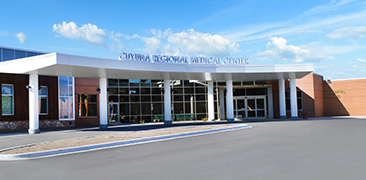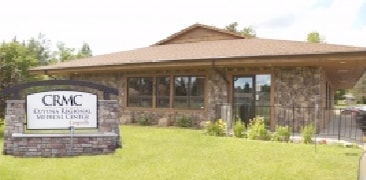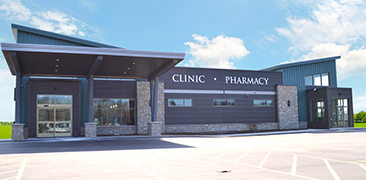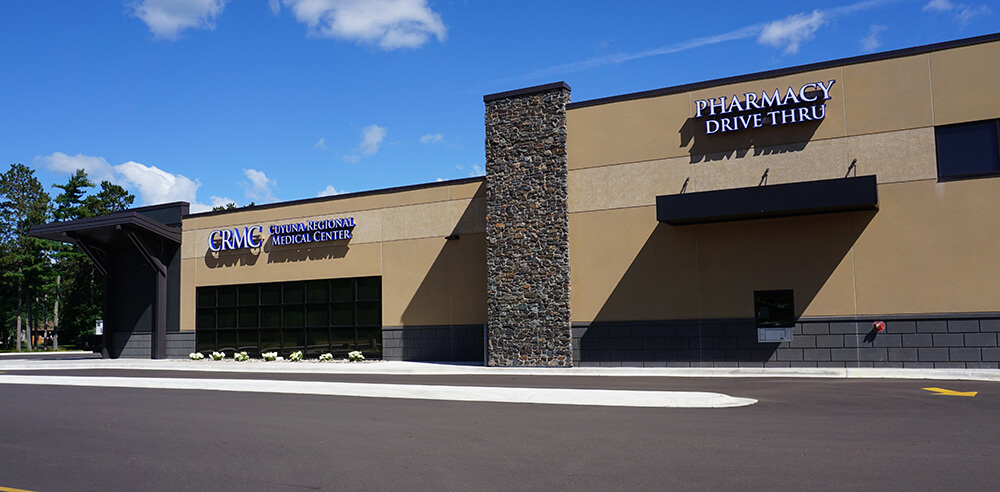Uterine fibroids are benign (not cancer) growths in the uterus. They are the most common type of growth found in a woman’s pelvis. In some women, fibroids remain small and do not cause symptoms or problems. However, in some women, fibroids can cause problems because of their size, number and location.
Types of Fibroids
Uterine fibroids are growths that develop from the muscle tissue of uterus. They also are called leiomyomas or myomas.
The size, shape, and location of fibroids can vary greatly. They may be present inside the uterus, on its outer surface, within its wall, or attached to it by a stem-like structure.
Fibroids can range in size from small, pea-sized growths to large, round ones that may be more than five to six inches wide. As they grow, they can distort the inside as well as the outside of the uterus. Sometimes fibroids grow large enough to completely fill the pelvis or abdomen.
A woman may have only one fibroid or many of varying sizes. Whether fibroids will occur singly or in groups is hard to predict. They may remain very small for a long time, suddenly grow rapidly or grow slowly over many years.
Causes
Fibroids are most common in women aged 30 to 40 years but they can occur at any age. Fibroids occur more often in African American women than in white women. They also seem to occur at a younger age and grow more quickly in African American women. It is not clear what causes fibroids. Some research suggests they develop from misplaced cells present in the body before birth. The female hormones estrogen and progesterone appear to be involved in their growth. Levels of these hormone can increase or decrease throughout a woman’s life. For instance, menopause causes a decrease in estrogen. Fibroids often shrink when a woman enters menopause. Hormonal drugs that contain estrogen such as birth control pills may cause fibroids to grow.
Symptoms
Fibroids may cause the following symptoms:
- Changes in menstruation
i. Longer, more frequent or heavy menstrual periods
ii. Menstrual pain (cramps)
iii. Vaginal bleeding at times other than menstruation
iv. Anemia from blood loss
- Pain
i. In the abdomen or lower back (often dull, heavy and aching, but may be sharp)
ii. During sex
- Pressure
- Difficulty urinating or frequent urination
- Constipation, rectal pain or difficult bowel movements
- Abdominal cramps
- Enlarged uterus and abdomen
- Miscarriages
- Infertility
These symptoms also may be signs of other problems. Therefore, you should see your doctor if you have any of these symptoms.
Fibroids also may cause no symptoms at all. Fibroids may be found during a routine pelvic exam or during tests for other problems.
Complications
Although most fibroids do not cause problems, there can be complications. Fibroids that are attached to the uterus by a stem may twist and can cause pain, nausea or fever. Fibroids that grow rapidly or those that start breaking down also may cause pain. Rarely, they can be associated with cancer.
A very large fibroid may cause swelling of the abdomen. This swelling can make it hard to do a thorough pelvic exam.
Fibroids also may cause infertility although other causes are more common. Other factors should be explored before fibroids are considered the cause of a couple’s infertility. When fibroids are thought to be a cause, many women can become pregnant after they are treated.
Diagnosis
The first signs of fibroids maybe detected during a routine pelvic exam. Many tests may show more information about fibroids:
Ultrasonography uses sound waves to create a picture of the uterus and other pelvic organs.
Hysteroscopy uses a slender device (the hysteroscope) to see the inside of the uterus. It is inserted through the vagina and cervix (opening of the uterus). This permits the doctor to see fibroids inside the uterine cavity.
Hysterosalpingography is a special X-ray test. It may detect abnormal changes in the size and shape of the uterus and fallopian tubes.
Sonohysterography is a test in which fluid is put into the uterus through the cervix. Ultrasonography is then used to show the inside of the uterus. The fluid provides a clear picture of the uterine lining.
Laparoscopy uses a slender device (the laparoscope) to help the doctor see the inside of the abdomen. It is inserted through a small cut just below or through the navel. The doctor can see fibroids on the outside of the uterus with the laparoscope.
Imaging test such as magnetic resonance imaging and computed tomography scans may be used but are rarely needed. Some of these tests may be used to track the growth of fibroids over time.
Treatment
Fibroids that do not cause symptoms, are small or occur in a woman who is nearing menopause often do not require treatment. Certain signs and symptoms may signal the need for treatment:
- Heavy or painful menstrual periods that cause anemia or that disrupt a woman’s normal activities
- Bleeding between periods
- Uncertainty whether the growth is a fibroid or another type of tumor such as an ovaria tumor
- Rapid increase in growth of the fibroid
- Infertility
- Pelvic pain
There are many treatment options for fibroids. The choice of treatment depends on factors such as your own wishes and your doctor’s medical advice about the size and location of the fibroids.
Medications
Drug therapy is an option for some women with fibroids. Medications may reduce the heavy bleeding and painful periods that fibroids sometimes cause. But, they may not prevent the growth of fibroids. Surgery often is needed later. Drug treatment for fibroids includes the following options:
- Birth control pills and other types of hormonal birth control methods--These drugs often are used to control heavy bleeding and painful periods. A drawback is that this treatment may cause the fibroids to increase slightly in size. For some women, the benefits of hormonal contraception outweigh the risk of this side effect.
- Gonadoptropin-releasing hormone (GnRH) agonists--These drugs stop the menstrual cycle and can shrink fibroids. They sometimes are used before surgery to reduce the risk of bleeding. GnRH agonists have many side effects, including bone loss, osteoporosis, vaginal dryness and night sweats. For these reasons, they are used only for short periods (less than six months). After a woman stops taking a GnRH agonist, her fibroids usually return to their previous size.
- Progestin-releasing intrauterine device—This option is for women with fibroids that do not distort the inside of the uterus. It reduces heavy and painful bleeding but does not treat the fibroids themselves.
In addition to these drugs, many others are being studied for the treatment of fibroids.
Myomectomy
Myomectomy is the surgical removal of fibroids while leaving the uterus in place. Because a woman keeps her uterus, she may still be able to have children. If a woman does become pregnant after a myomectomy, the baby may need to be delivered by cesarean birth. Sometimes, though, a myomectomy causes internal scarring that can lead to infertility.
Fibroids do not regrow after surgery but new fibroids may develop. If they do, more surgery may be needed.
Myomectomy maybe done in several ways:
- Laparotomy
- Laparoscopy
- Hysteroscopy
The method used depends on the location and size of the fibroids. In laparotomy, an incision (cut) is made in the abdomen. The fibroids are removed through the incision. In laparoscopy, a laparoscope is used to view the inside of the pelvis. Other tools are inserted through another small incision to remove the fibroids.
Hysteroscopy can be used to remove fibroids that protrude into the cavity of the uterus. A resectoscope is inserted through the hysteroscope. The resectoscope destroys fibroids with electricity or a laser beam. Although it cannot remove fibroids deep in the walls of the uterus, it often can control the bleeding these fibroids cause. In most cases, an overnight stay in the hospital is not necessary.
Myomectomy has risks, including bleeding and infection. Hysteroscopy may cause other problems related to the use of fluid during the procedure. Your doctor can explain all the risks to you.
Endometrial Ablation
Endometrial ablation destroys the lining of the uterus. It is used to treat women who have heavy menstrual periods. This treatment also is used to treat women with small (less than three centimeters) fibroids.
There are several ways to perform an endometrial ablation. Most of them use some form of energy such as heat to destroy the uterine lining. Not all the methods are used to treat fibroids. Two commonly used methods are the heated balloon and a method using microwave energy.
Risks of endometrial ablation include bleeding and infection. The device used to destroy the lining of the uterus may pass through the uterine wall or bowel, although this rarely happens. Most women are not able to get pregnant after they have this procedure.
Uterine Artery Embolization
Another way to treat fibroids is called uterine artery embolization (UAE). In this procedure, the blood vessels to the uterus are blocked, stopping the blood flow that allows fibroids to grow.
This procedure usually is performed by a specially trained radiologist. In some cases, it is done as an outpatient procedure. In other cases, you may need to spend a night in the hospital.
A small incision (cut) is made in your groin area. A tube called a catheter is passed through the larger artery there until it reaches the small arteries that supply uterus with blood. Tiny particles about the size of sand are inject through the catheter into these arteries. The particles cut off the blood flow to the fibroid and cause it to shrink. The procedure works even if you have more than one fibroid.
Many women have cramping for a few hours after the procedure. Some women have nausea or fever. Medicine often can help treat these symptoms.
Complications are not common but include infection and uterine injury. Most women will resume regular menstrual periods shortly after the procedure. In about 40 percent of women older than 50 years who have UAE, menstrual periods do not return.
The effect of UAE on future pregnancies is not clear. Women who have had UAE may be at greater risk for placenta problems during pregnancy. Women who want to have children may want to consider other forms of treatment.
Hysterectomy
Hysterectomy is the removal of the uterus. The ovaries may or may not be removed. For this procedure, the uterus may be removed through an incision (cut) in the abdomen or through the vagina. The method used depends on the size of the fibroids. For pain relief, you may be given general anesthesia which puts you to sleep or regional anesthesia which blocks out feeling the lower part of your body. You may need to stay in the hospital for a few days after this procedure.
Hysterectomy may be needed if:
- Pain or abnormal bleeding persists
- Fibroids are very large
- Other treatments are not possible
If your doctor thinks you need a hysterectomy, he or she will first rule out other problems with the uterus such as diseases of the uterine lining. A woman is no longer able to have children after having a hysterectomy.
Magnetic Resonance Imaging-Guided Ultrasound Surgery
In this new approach, ultrasound waves are used to destroy fibroids. The waves are directed at the fibroids through the skin with the help of magnetic resonance imaging. Studies show that women have improved symptoms up to one year after having the procedure. Whether this approach provides long-term relief is currently being studied.
Finally . . .
Uterine fibroids are benign growths that occur quite often in women. Fibroids may cause no symptoms and require no treatment. Sometimes however, they need to be treated.
If you have uterine fibroids or have had them in the past, you should be checked by your doctor on a regular basis. Getting regular checkups and being alert to warning signs will help you be aware of changes that may require treatment











